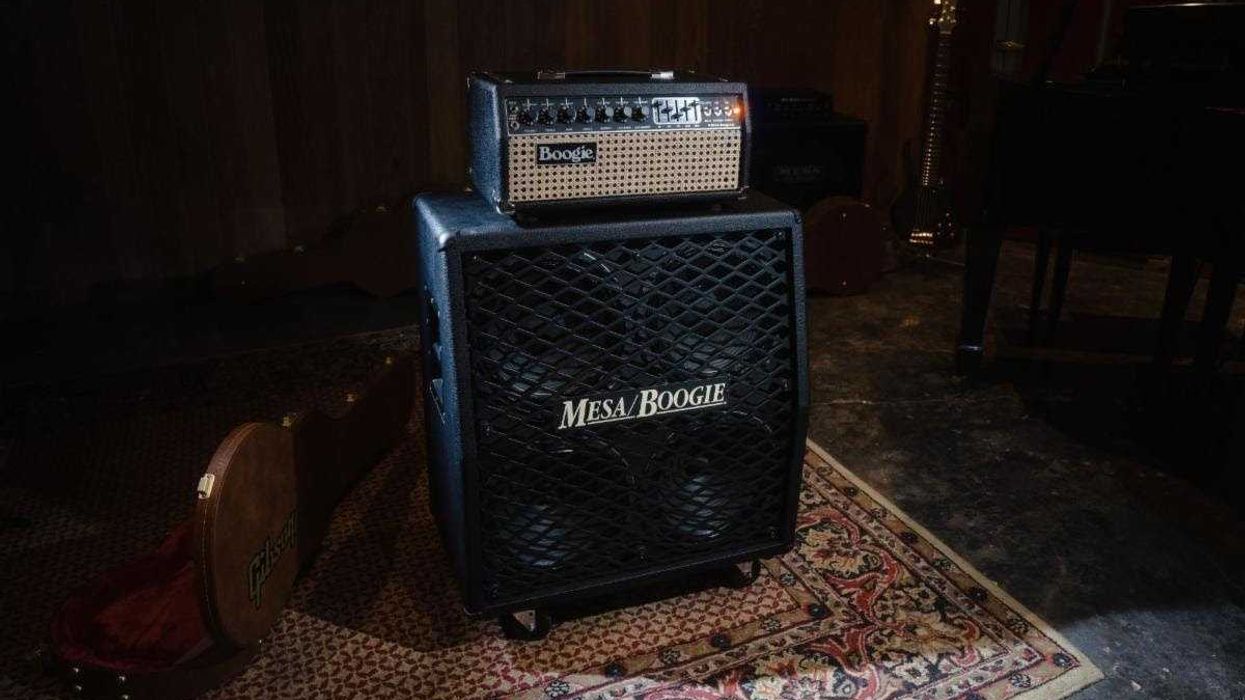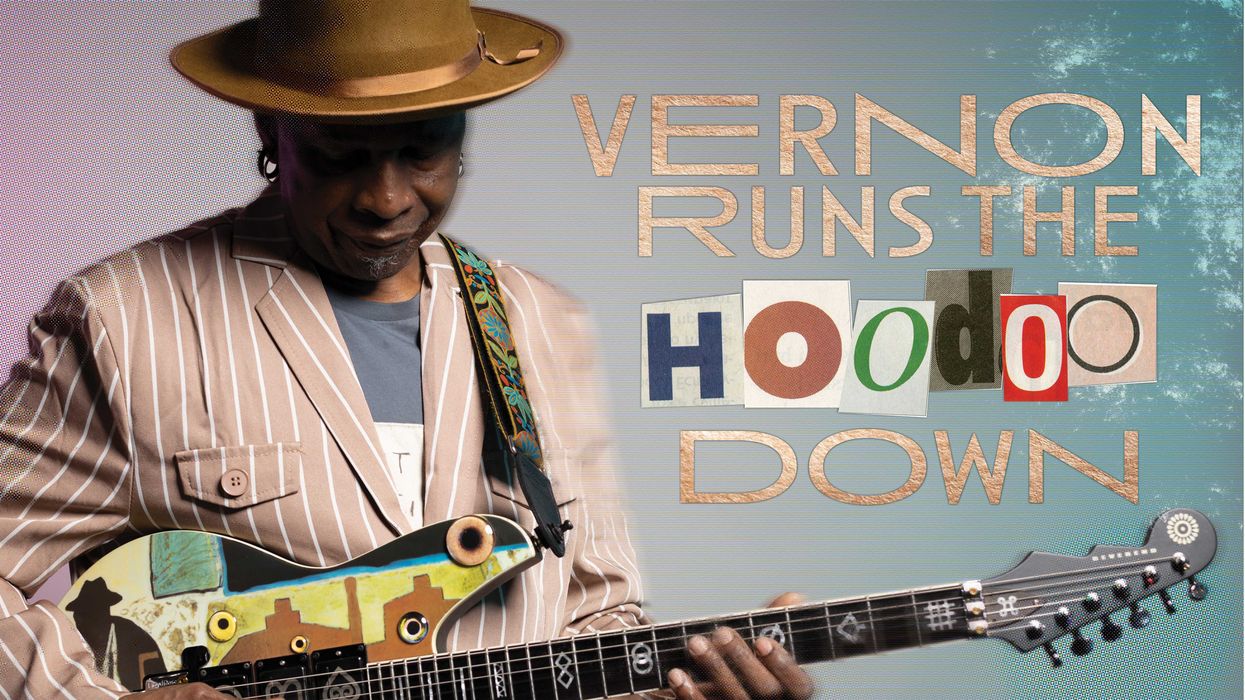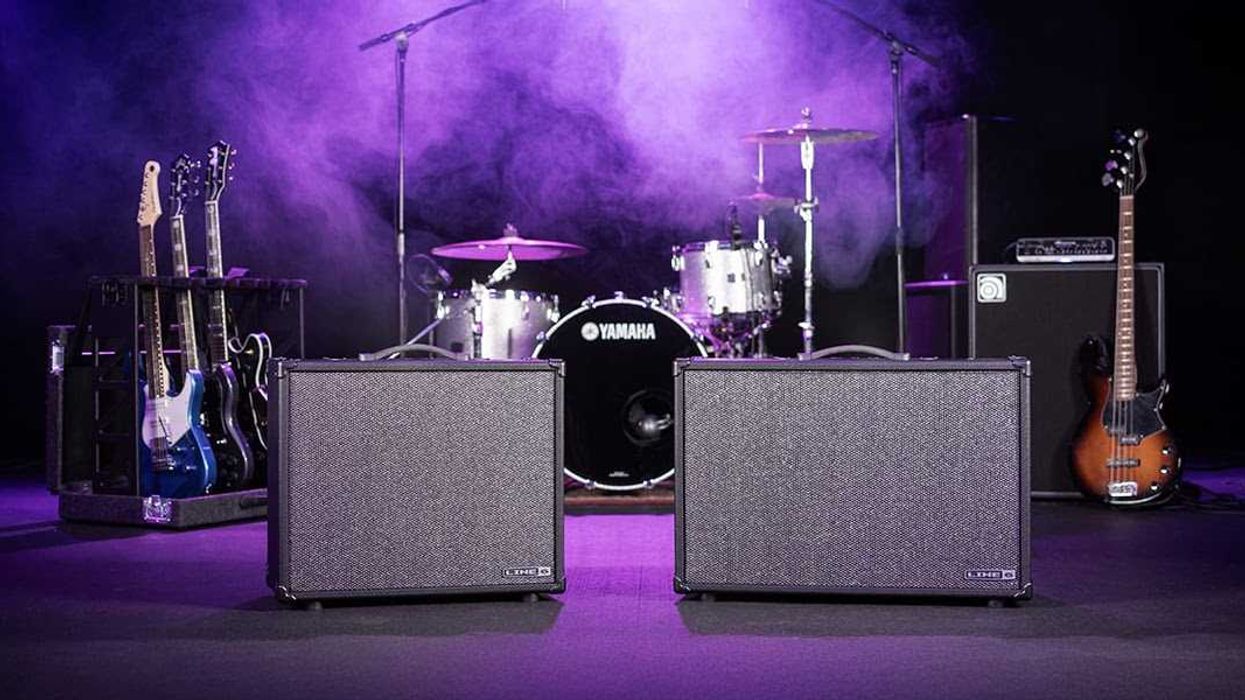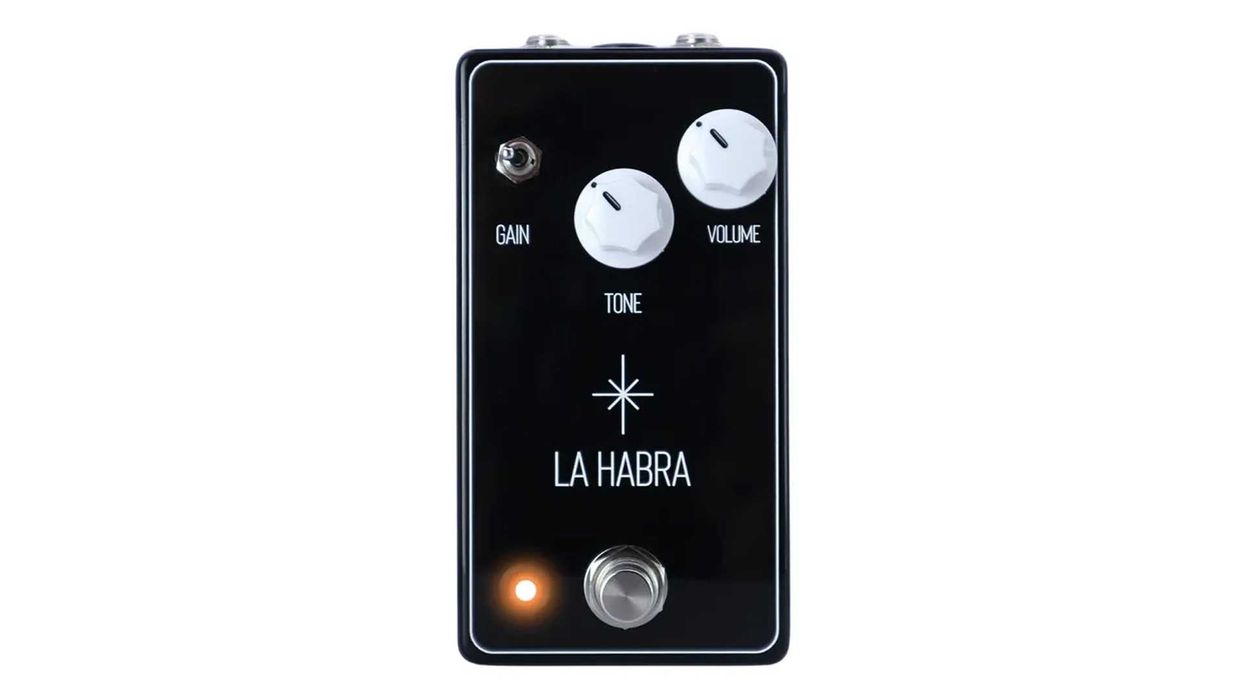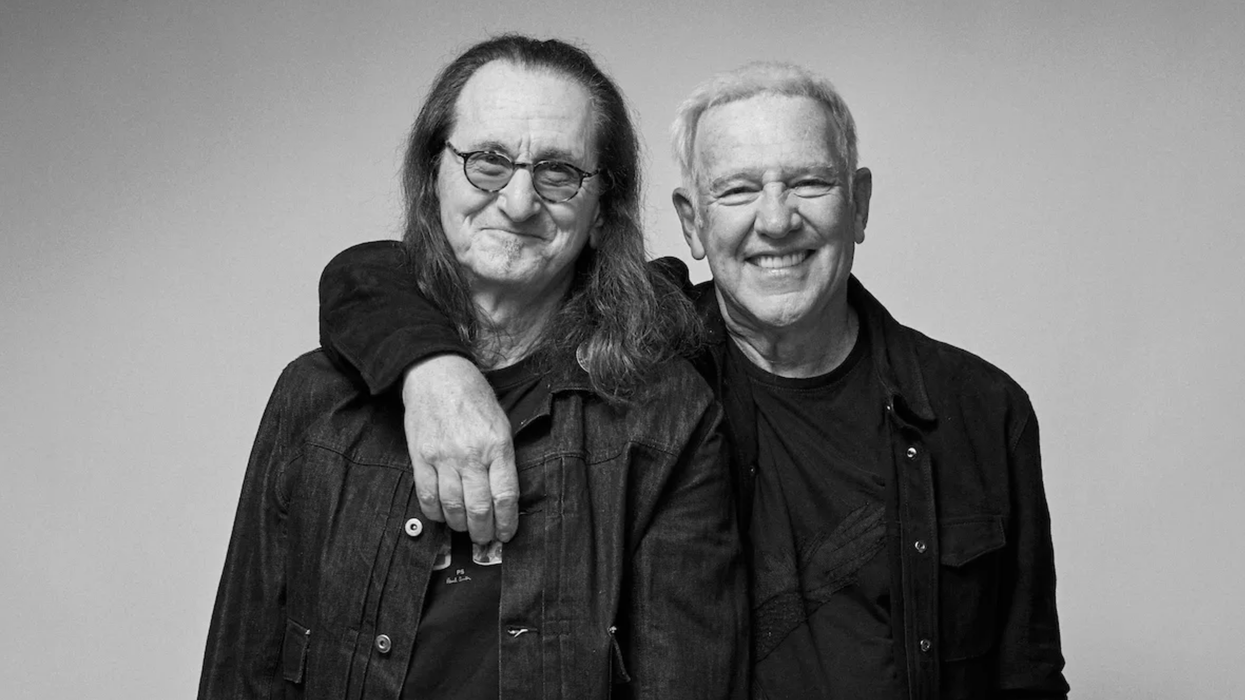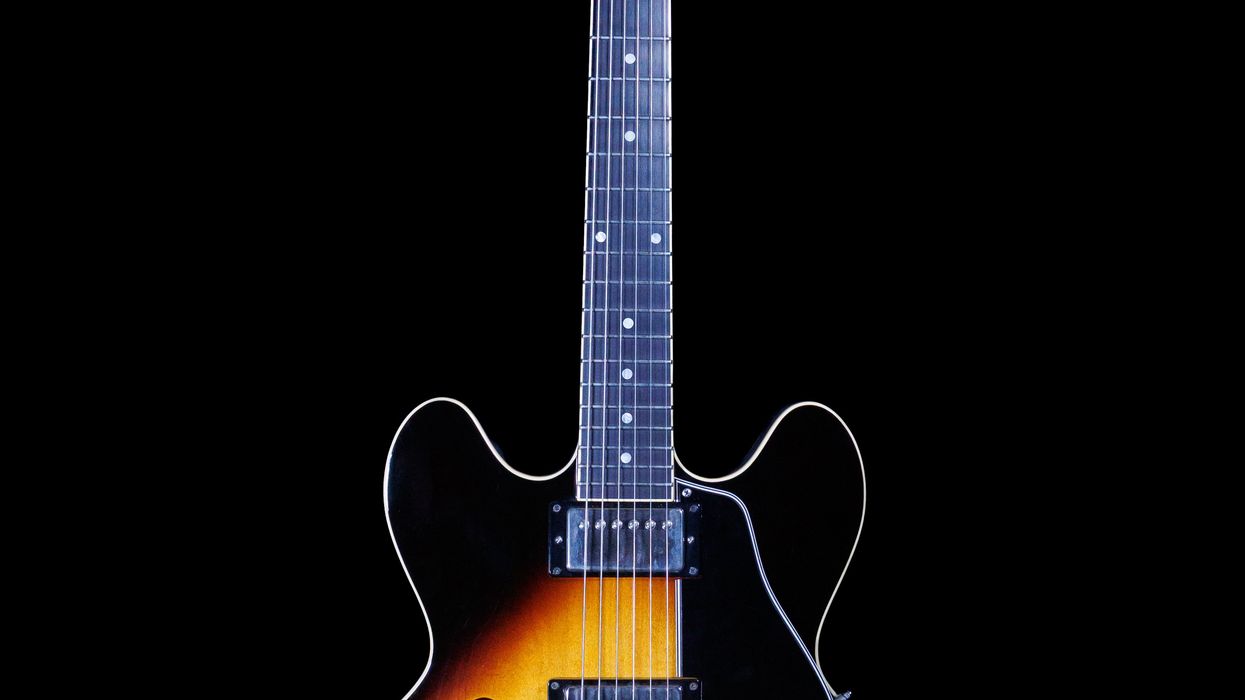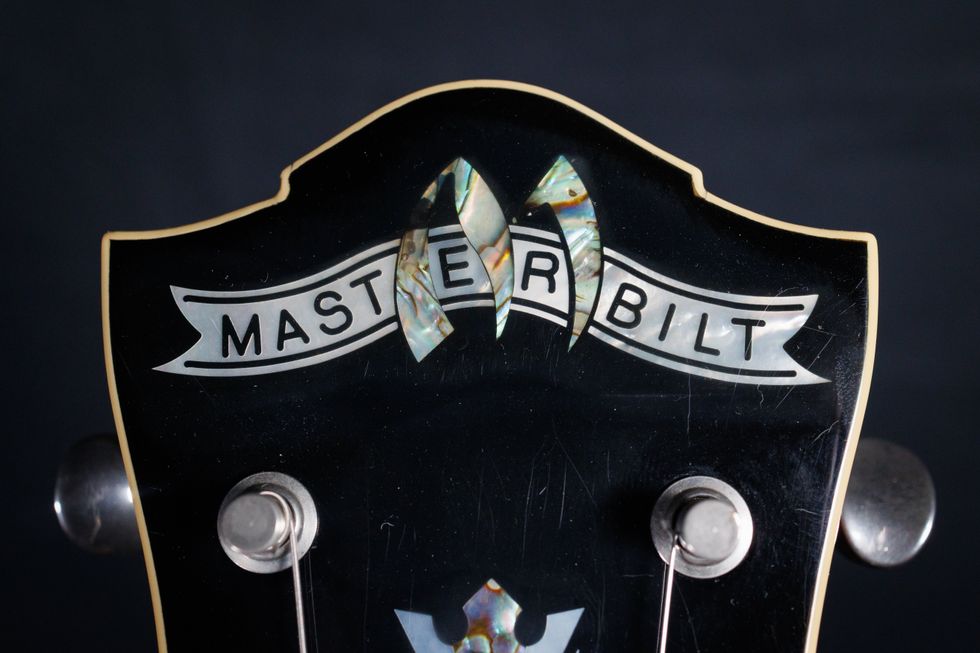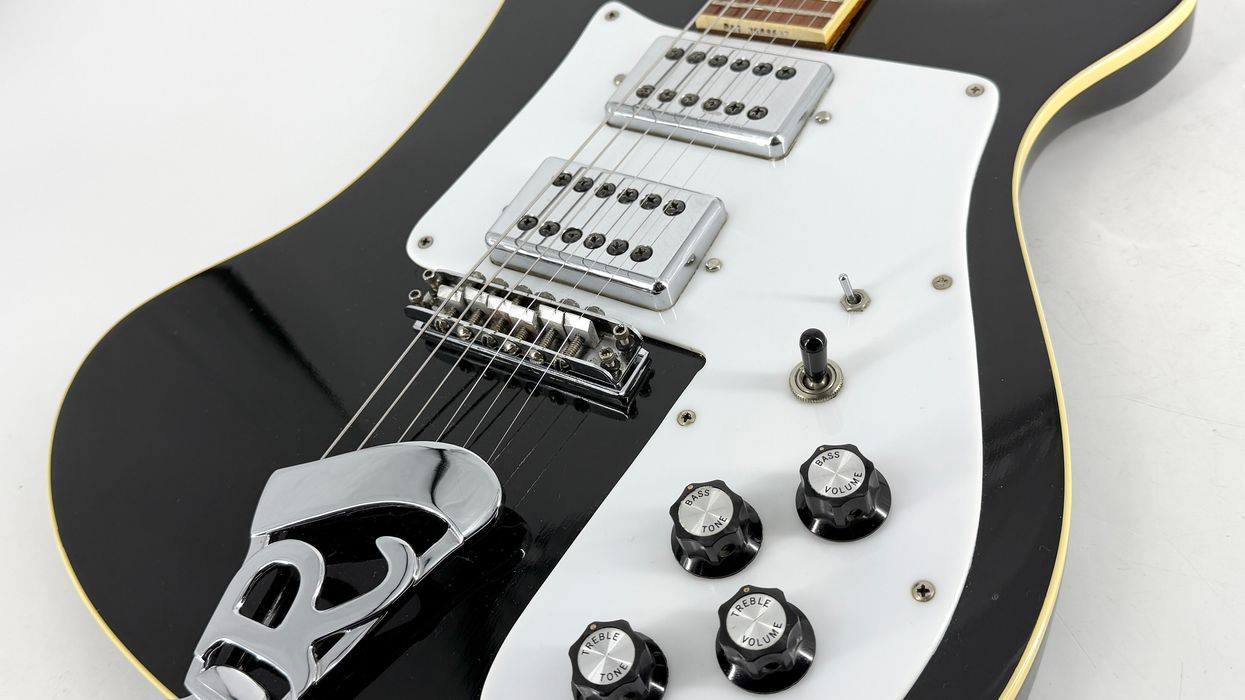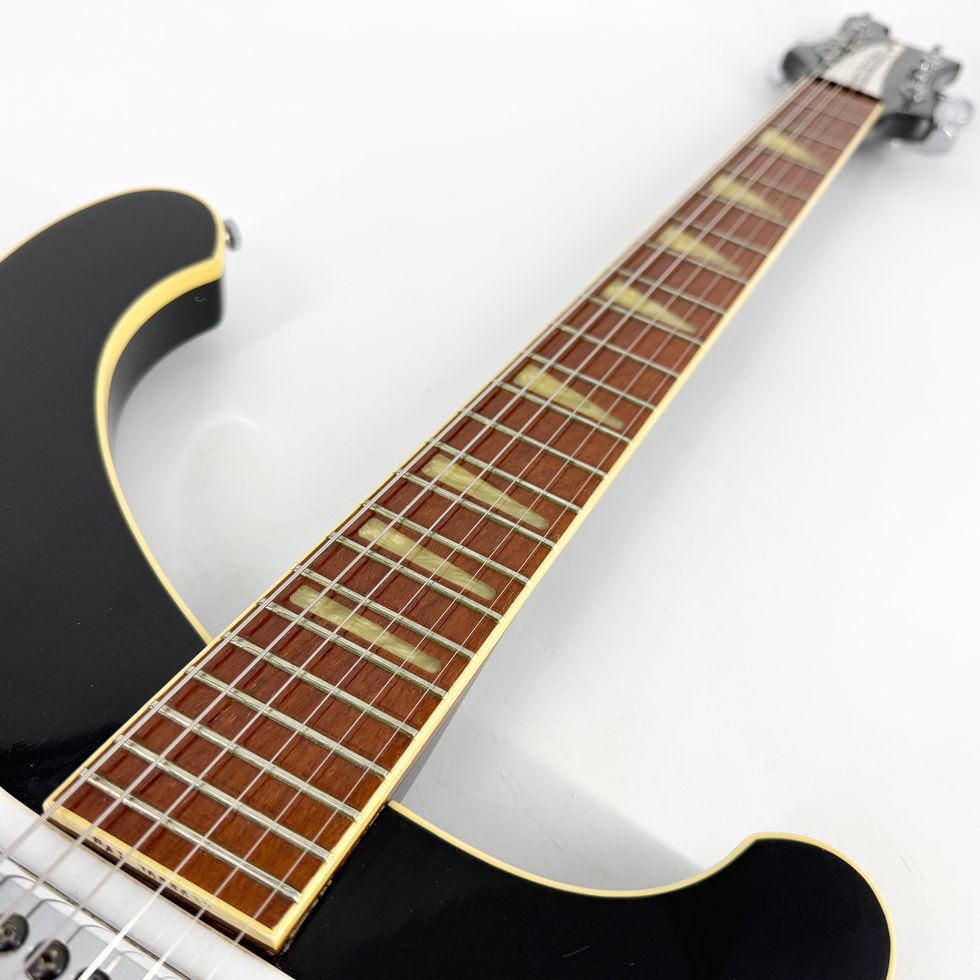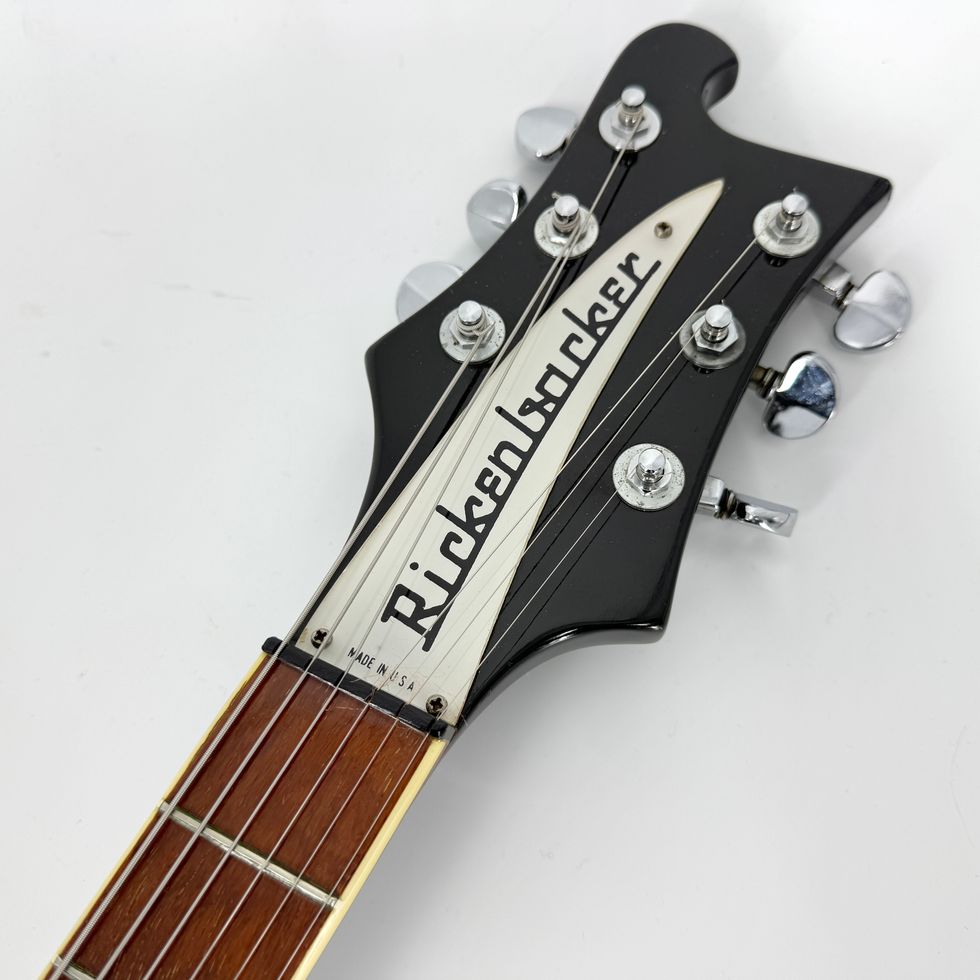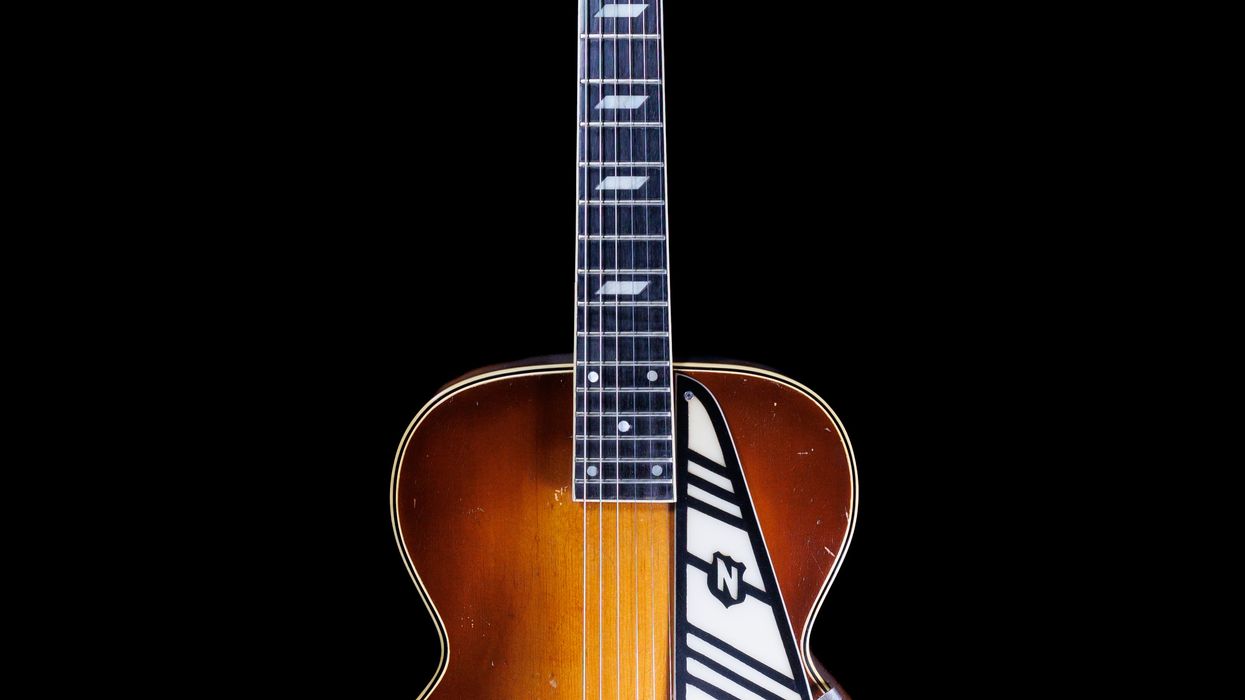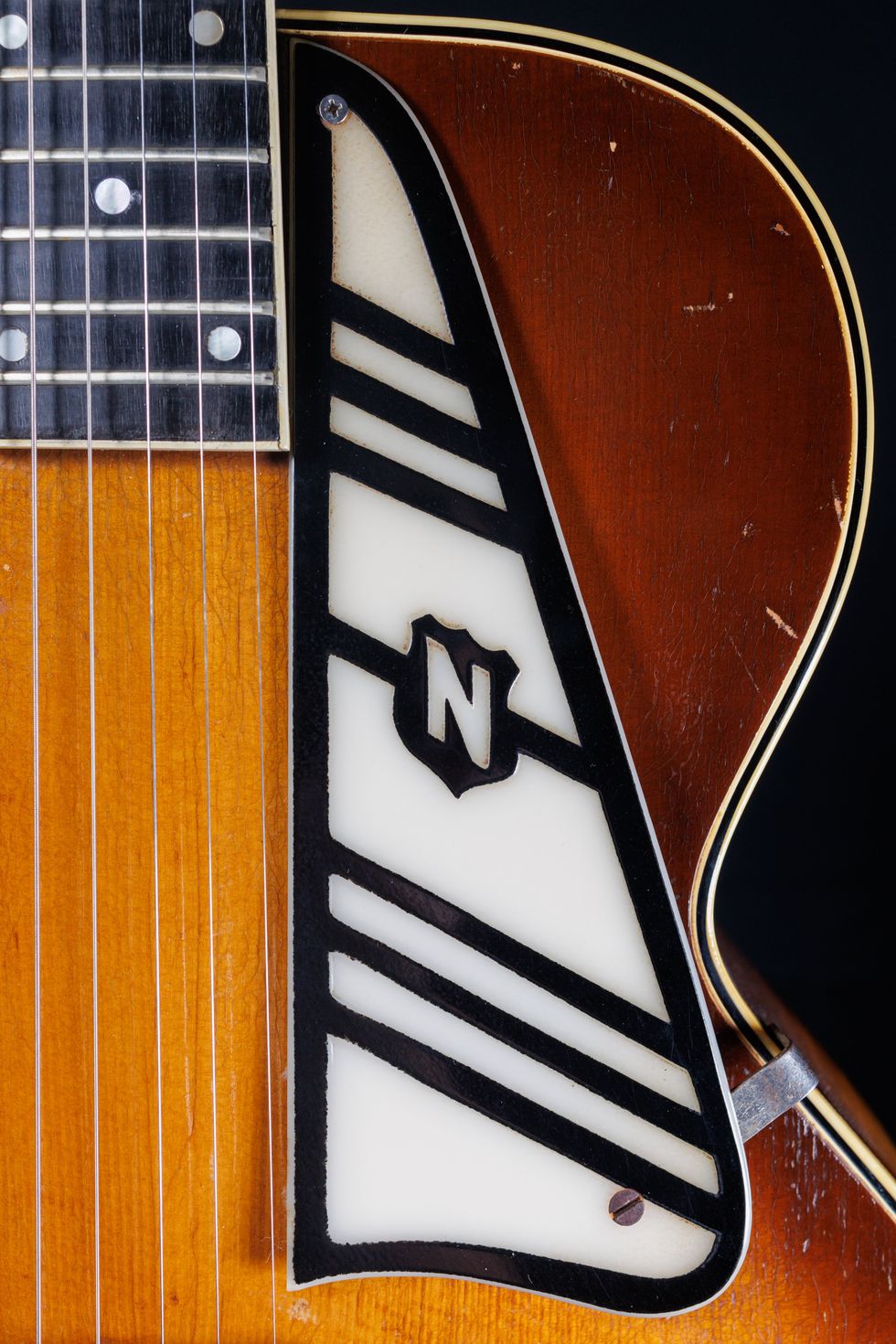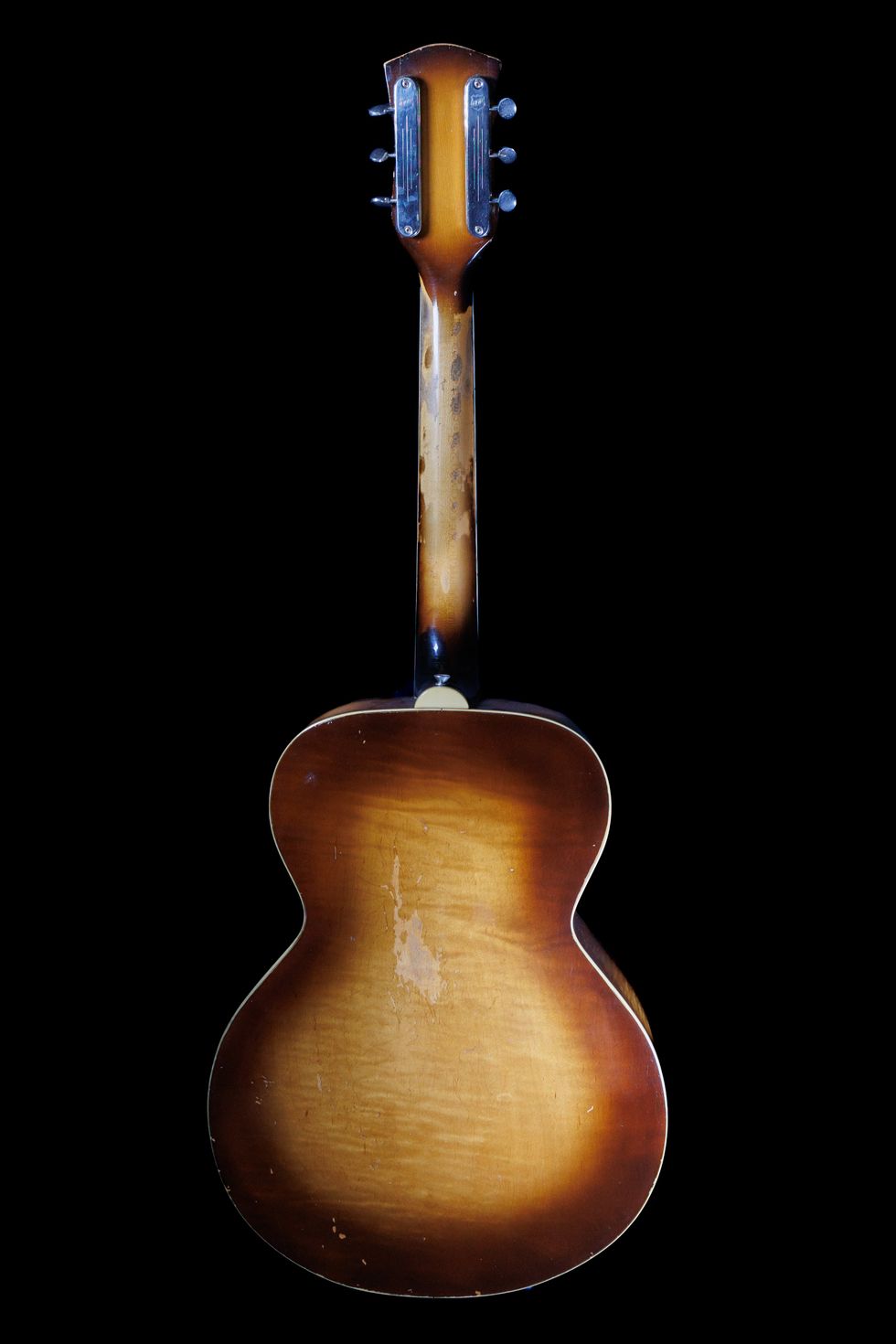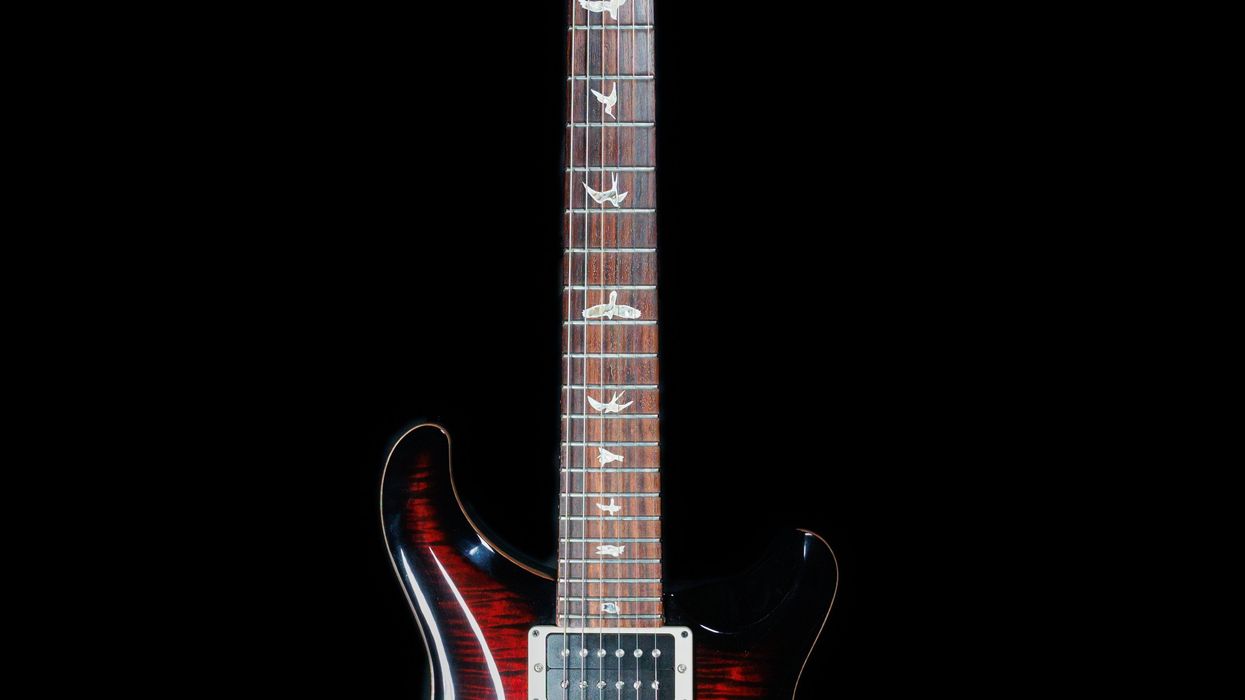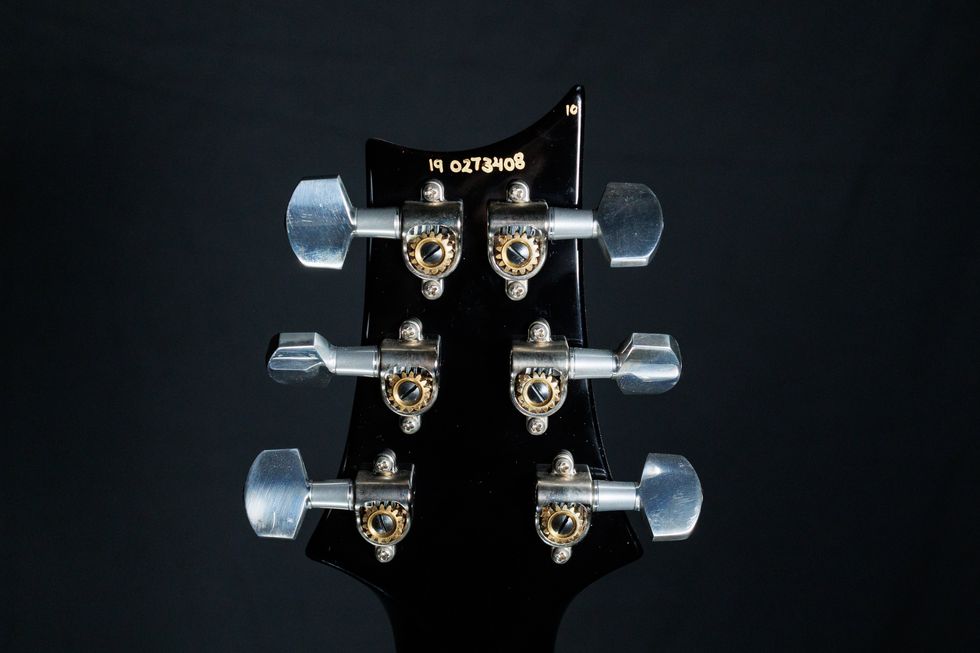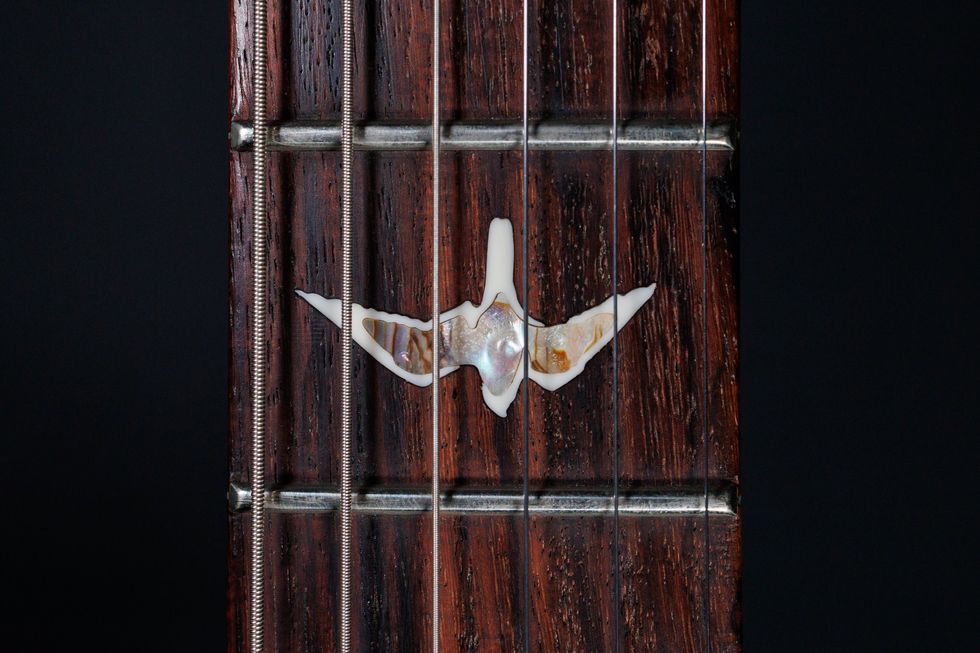From the sparse, smoky ballads of Julie London to the hard bop of Sonny Rollins, Barney Kessel could back up just about anybody. The bandleader, session great, Wrecking Crew member, and sideman was one of the most accomplished guitarists of his era. His chordal complexity not only got him steady work and accolades, but also a collection of signature guitar models bearing his name.
This 1968 Gibson Barney Kessel Custom is a top-of-the-line example. It’s the higher-end counterpart to the Barney Kessel Regular, both built from 1961 until 1974. They followed a trio of Barney Kessel signatures that Kay sold between 1957 and 1960.
Barney Kessels often became parts donors, with their hardware, tuners, and pickups (original PAFs, Pat. No., and T-Tops, depending on the year) being stripped and sold separately.
Each Gibson model has a hulking 17"-wide and nearly 3"-deep body, with two humbuckers, a Tune-o-matic bridge, and a bound rosewood fretboard. The attractive Barney Kessel tailpiece is also common to both, while the controls will be familiar to any Gibson player: two volume pots, two tone knobs, and a 3-way selector switch. The dual Florentine cutaways—a design first seen in these Barney Kessels and later used in Gibson’s Trini Lopez signature—cut a striking silhouette.
Of the two Gibson Kessels, the Custom alone is dressed to the nines, swapping in gold-plated hardware for the Regular’s nickel, and bowtie inlays for the Regular’s fretboard parallelograms. There’s also a 3-piece maple neck with two pinstripe-thin mahogany strips taking over for the Regular’s solid mahogany. And the Custom tops off its outfit with a pearl headstock inlay in the shape of a musical note.
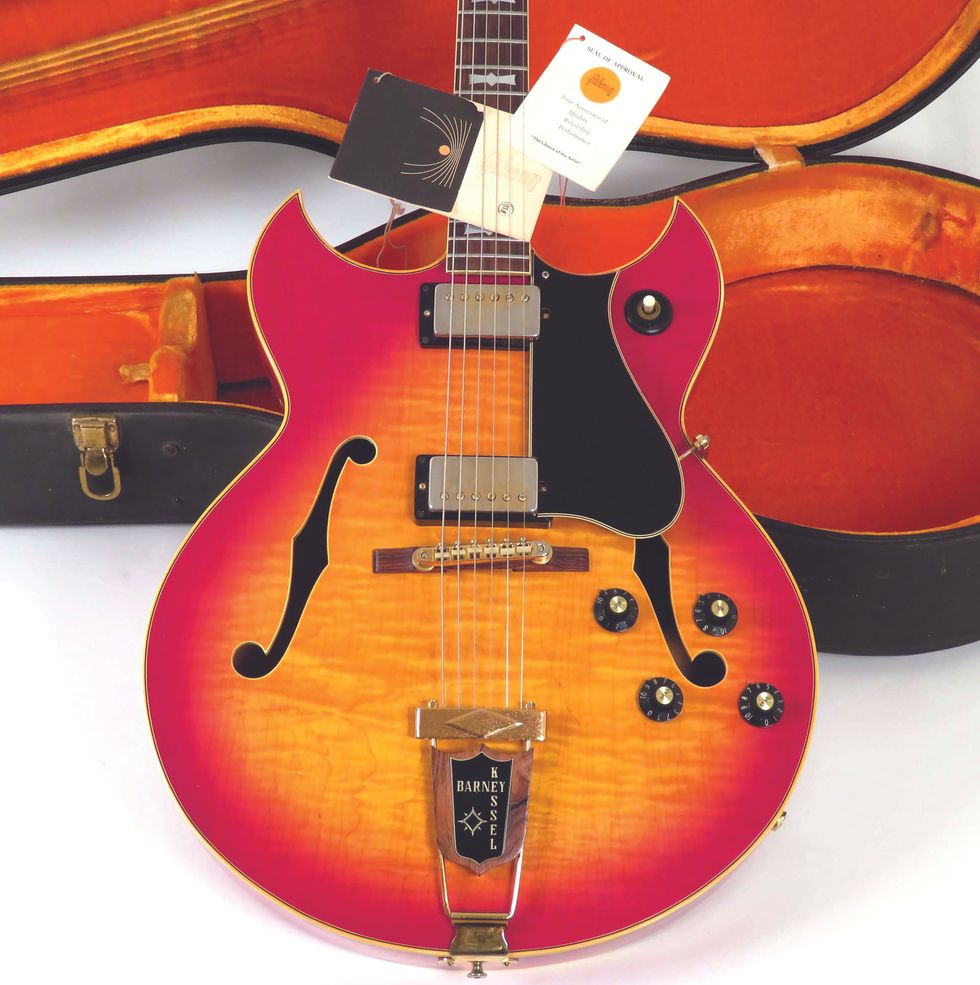
Such features were a huge upgrade to the art-deco stylings and Kleenex-box pickups of Kay’s Kessel signatures, which Kessel snubbed, reportedly saying, “I don’t play that Kay. It’s a terrible guitar!” Interestingly, he often chose not to play these Gibson signatures, either, instead typically using his favorite 1940s ES-350.
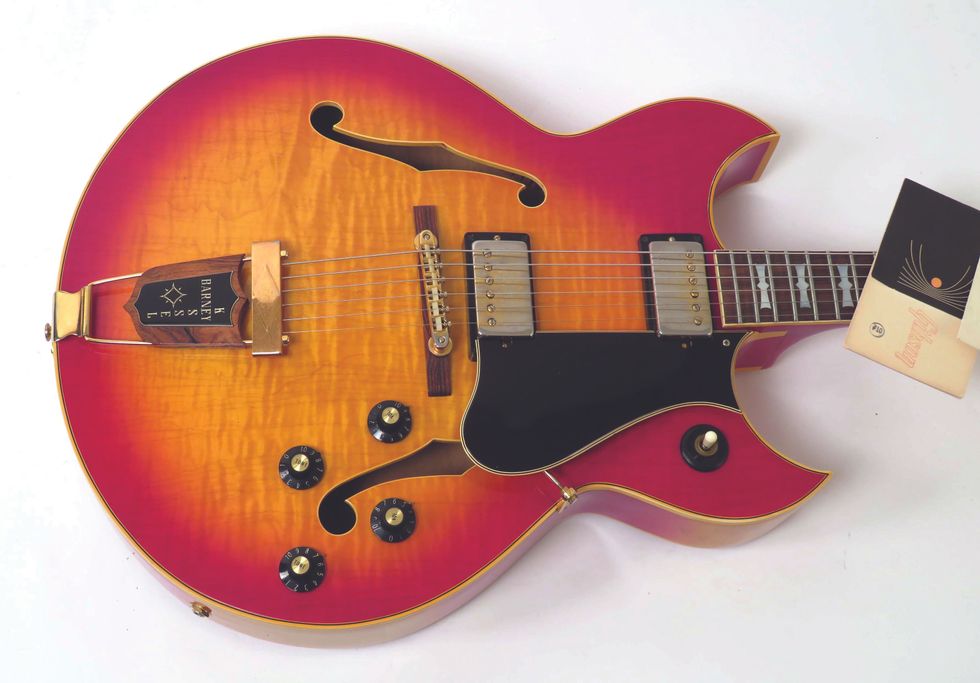
When they were introduced, Gibson’s Barney Kessel Custom model had a list price of $599, while the Regular’s was $399. Both sold in respectable if not incredible numbers, with sales peaking in 1968. However, the following decades were not particularly kind to the guitars. As the vintage market took off for Les Pauls, SGs, and other classic Gibsons, Barney Kessels often became parts donors, with their hardware, tuners, and pickups (original PAFs, Pat. No., and T-Tops, depending on the year) being stripped and sold separately. You can still find Barney Kessel husks on the market—project guitars looking for a new owner to rebuild them. And many of the complete Barney Kessels you’ll find for sale have been rebuilt.
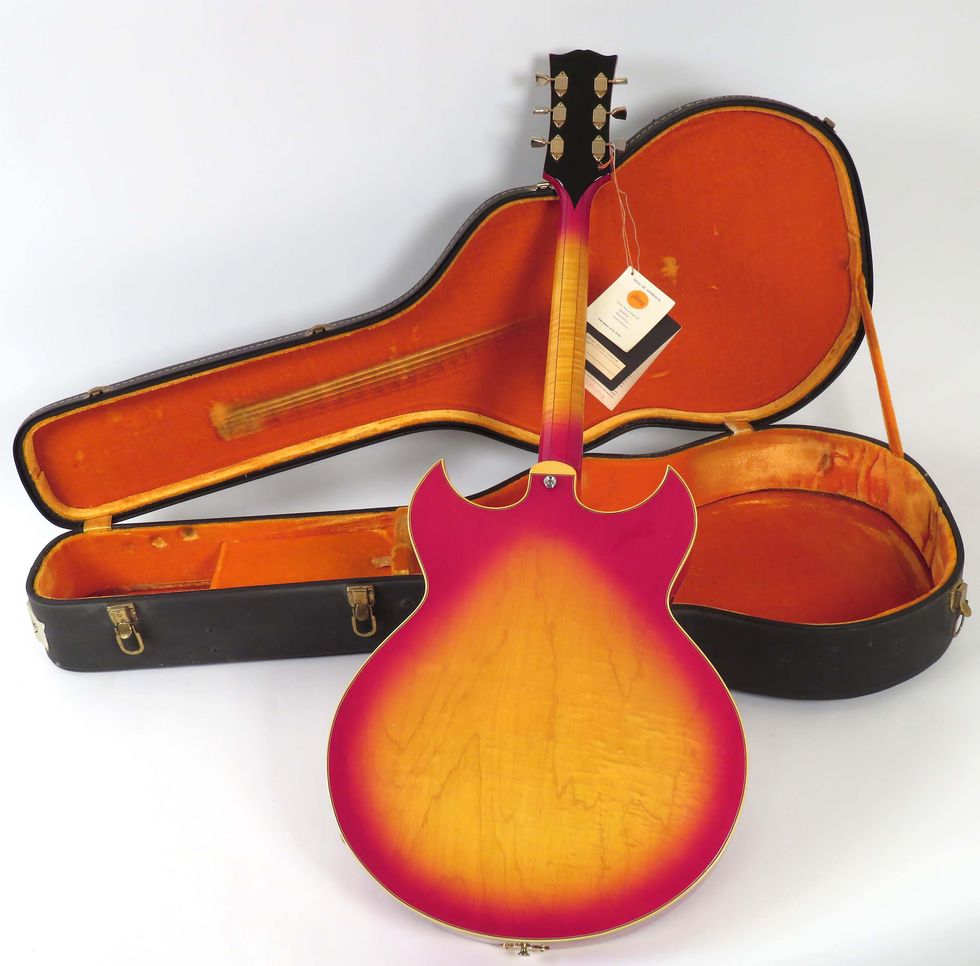
A rear view indicates this Kessel was not heavily played. There’s no belt rash, finish wear, or other marks, and the new-guitar tags typically indicate that the previous owner or owners had a collector’s sensibility.
That’s what makes the particular Barney Kessel Custom featured here so special. It’s nearly all original, with Patent pickups intact and even its Custom-stamped hang tags. The only modification is one replaced tuner (along with a couple patched screw holes from a previous replacement). The cherry in its cherry sunburst finish is one of the most vibrant we’ve ever seen, and the condition of the finish overall is in impeccable vintage shape.
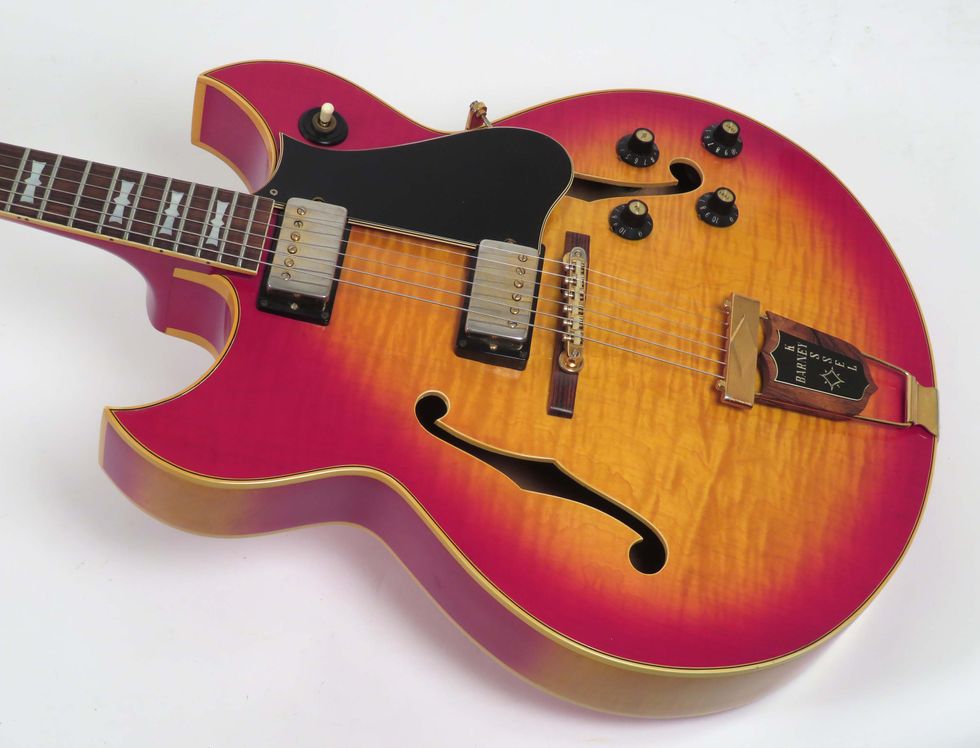
This Custom model is classic Gibson, with its 4-knob control array, 3-way toggle, and Pat. No. pickups. Unique flourishes include the special Barney Kessel tailpiece and bow-tie fretboard inlays.
Because of the wide array of Barney Kessel Customs on the used market—many with non-original parts—you can find them across the price spectrum, from about $3,000 on the low-end to $12,000 or more on the high. This Custom, listed on Reverb now by Nationwide Guitars, fittingly lands on the higher end, with an asking price of $8,999.
Sources for this article include Gruhn’s Guide to Vintage Guitars by George Gruhn and Walter Carter, American Guitars: An Illustrated History by Tom Wheeler, Reverb’s “Player Profile: The Hard-Swinging Barney Kessel” by Greg Cooper, Premier Guitar’s “Gibson and Barney Kessel” by Jim Bastian, and Reverb listings from Retrofret Vintage Guitars and Vintage Correct Parts.
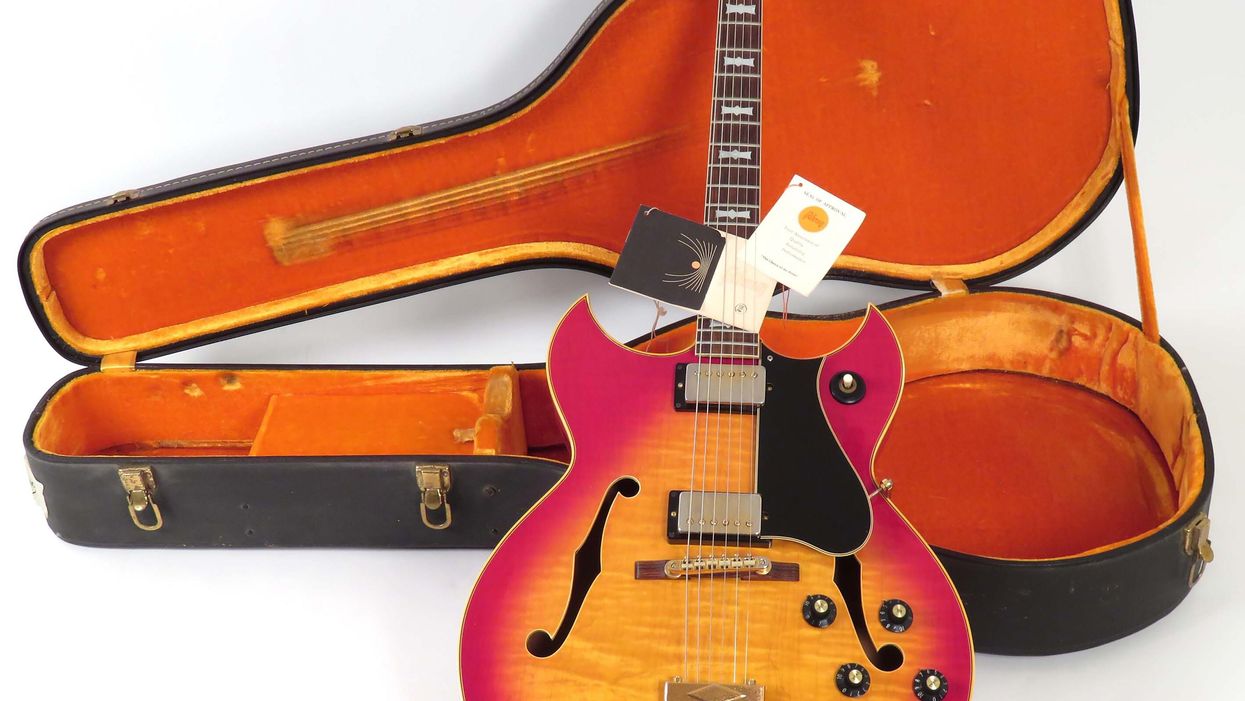

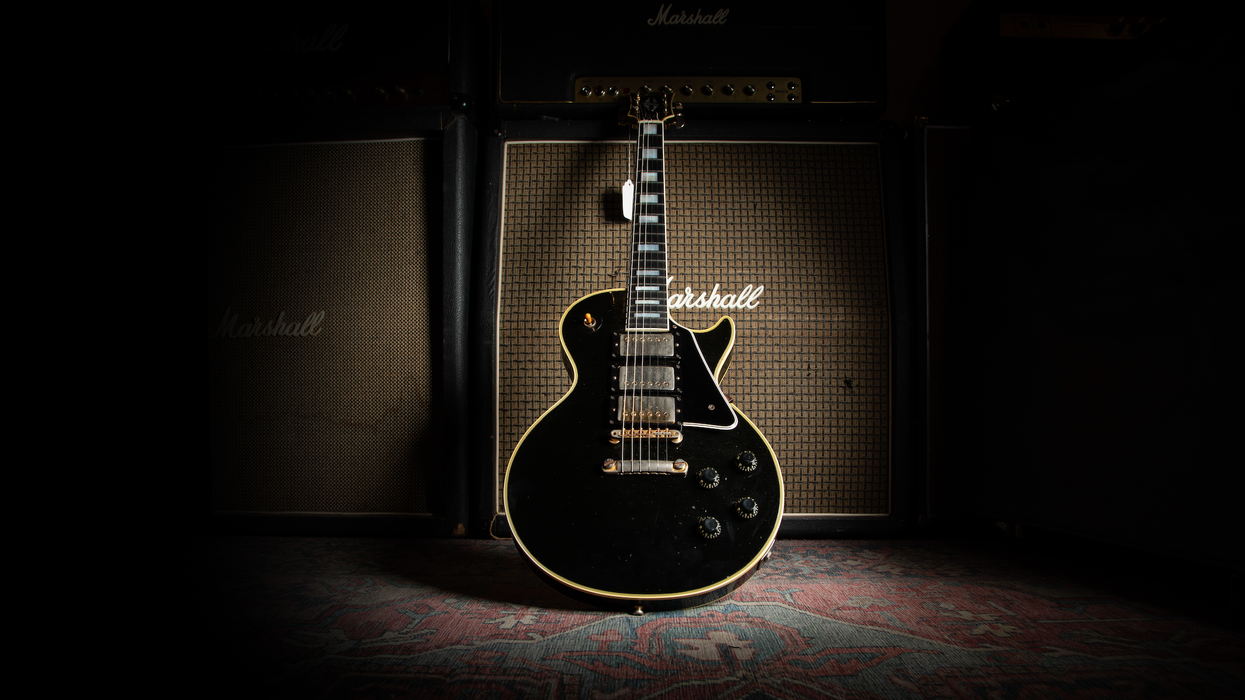
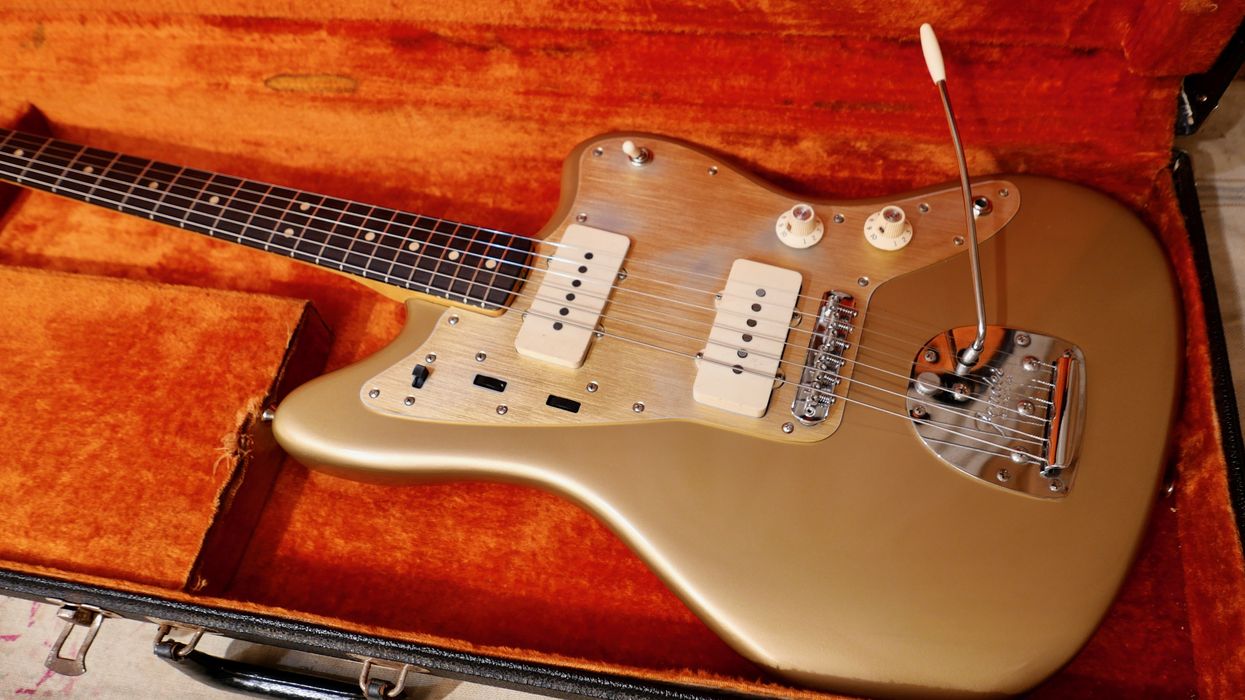
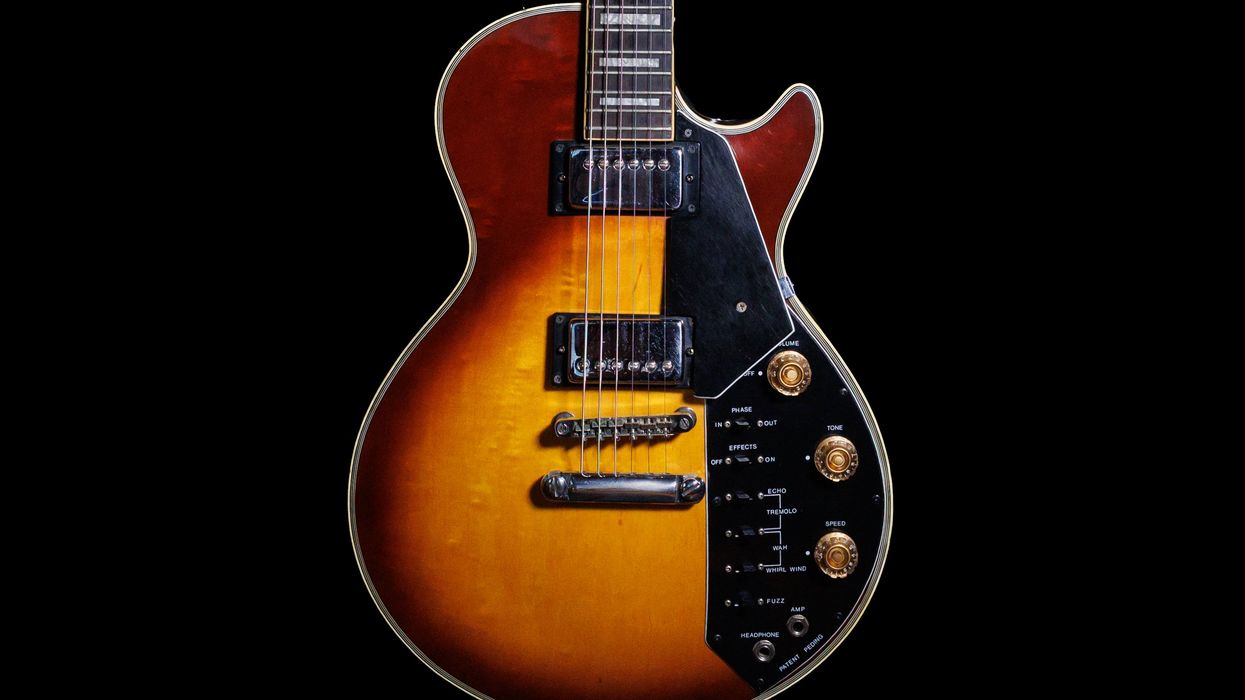
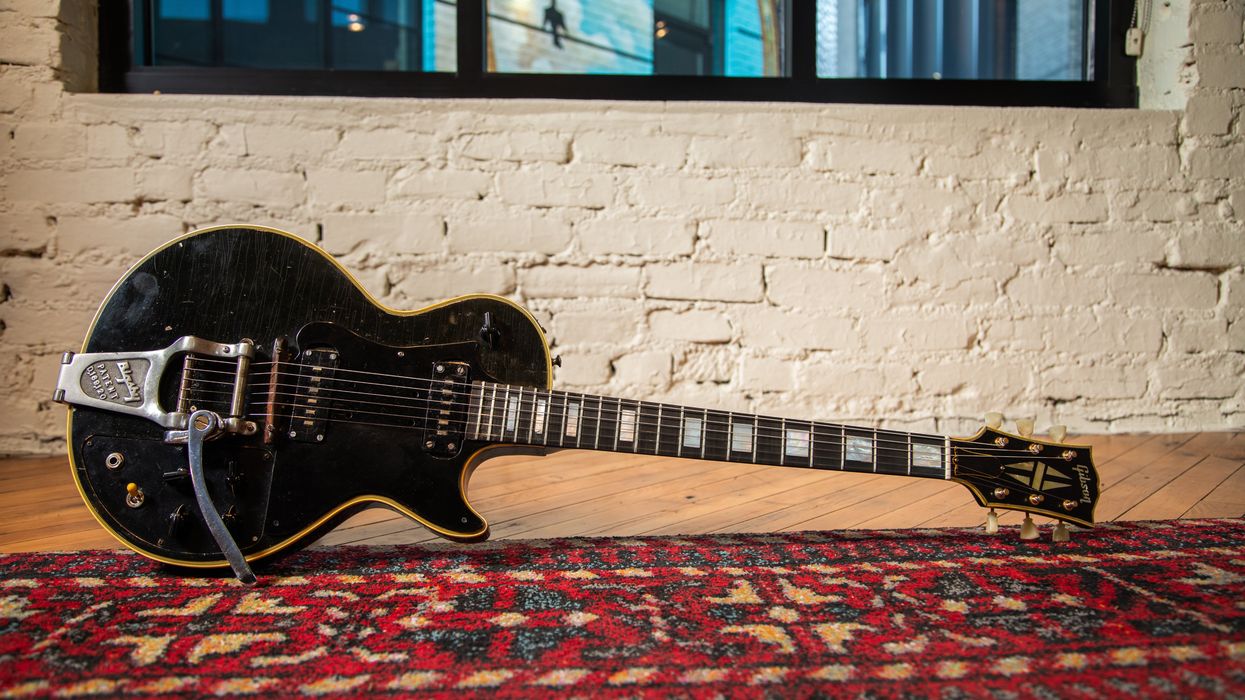
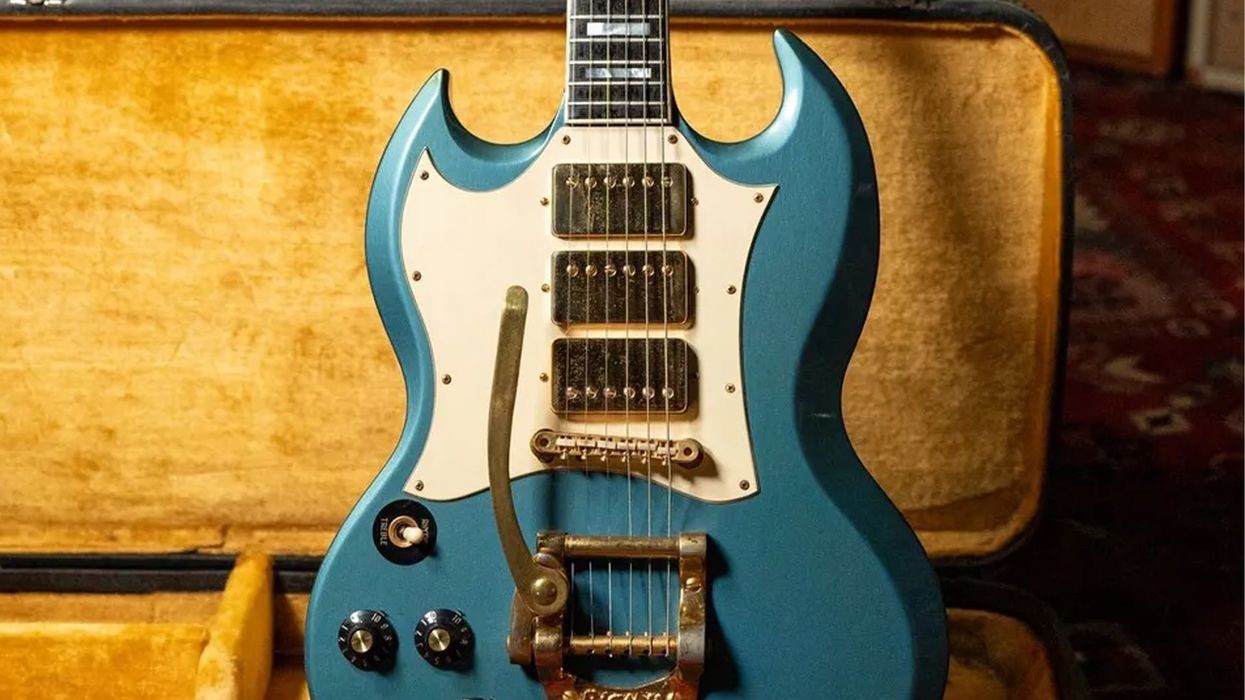
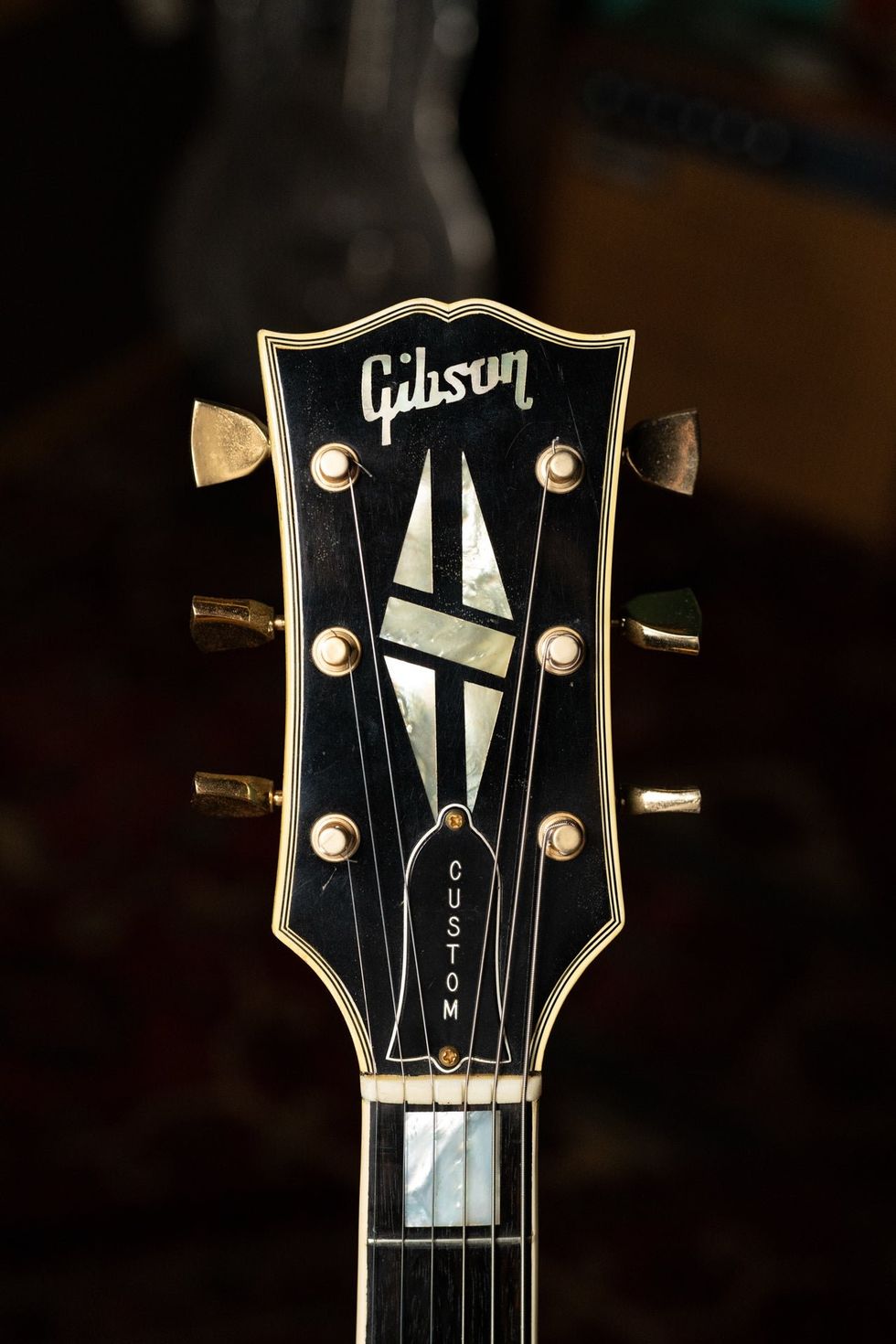
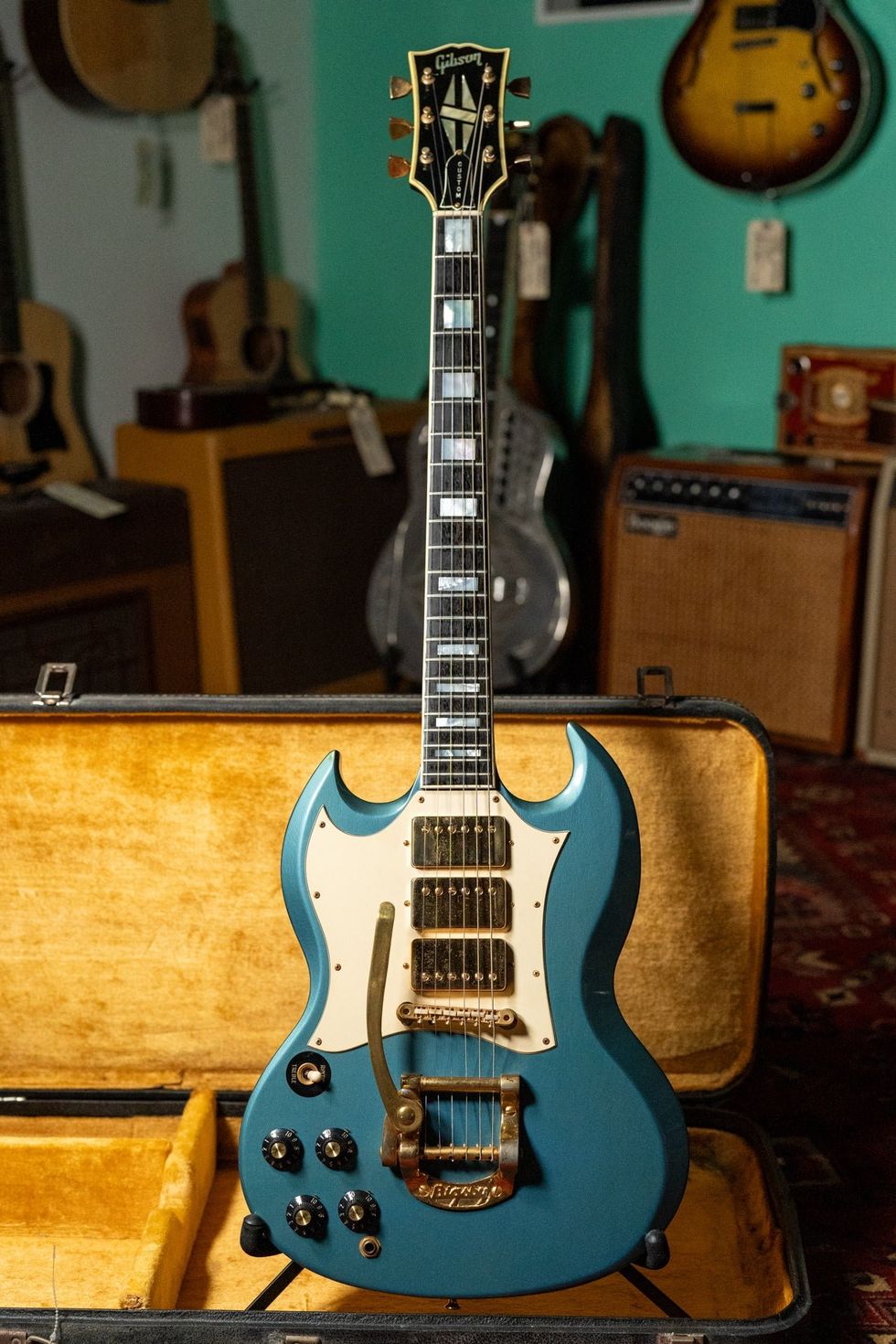 Whether or not Jimi Hendrix actually played this guitar might come down to how lucky its buyer feels.Photo courtesy of Imperial Vintage Guitars Reverb Shop
Whether or not Jimi Hendrix actually played this guitar might come down to how lucky its buyer feels.Photo courtesy of Imperial Vintage Guitars Reverb Shop